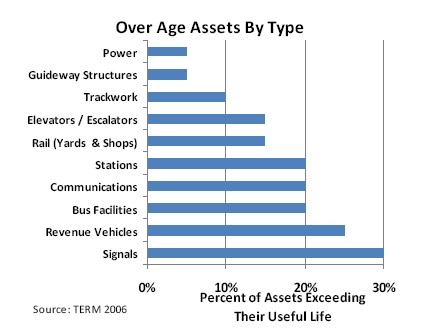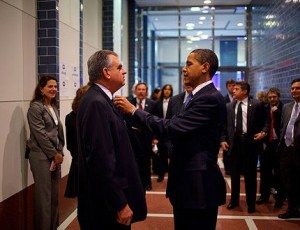Tom McNamara, Blueprint America
Or, once you’re sorry you better be safe.
That is the line U.S. Transportation Secretary Ray LaHood is taking after introducing Tuesday the Administration’s plan to take over safety regulation of the nation’s subway and light-rail systems. This follows, among other recent incidents, the June 22 Metro crash in Washington, D.C., that killed nine people and injured dozens more.
[read LaHood’s draft legislation here]
“Everyone in this region woke up the day after that crash and said: ‘Who’s responsible for safety?’ And there was no one,” LaHood said, testifying before a House transportation subcommittee.
Federal officials put the cost of the proposed legislation under $100 million — a modest number in this time of nearly trillion dollar bills on the floors of Congress, including a proposed six-year, $500 billion transportation bill in the House.
A plan that is expected to take three years to implement, it would give federal authorities the ability to bring lawsuits and seek criminal sentences in scenarios similar to the D.C. Metro crash. Others testifying before the subcommittee said that the number of safety monitors of rail-transit agencies across the country would triple or quadruple as a result, including more skilled workers.
According to The Washington Post:
“Federal personnel and approved state workers would have the power to conduct inspections, investigations and audits. They could test equipment, subway cars and train operators. They would be given subpoena power and could obtain restraining orders and injunctions, seek civil penalties and pursue criminal penalties of up to 10 years in prison for safety violations.”
 Graphic: Federal Transit Administration Graphic: Federal Transit Administration |
Although the plan would add more eyes, it is not clear it accomplishes much in addressing these safety problems. In D.C., for example, while the cause of the accident was determined to be a lapse in Metro’s fail-safe crash-avoidance system, the train involved was also outdated — one of the oldest still in use throughout the country. And to fix that problem, it will take more than an infusion of $100 million. According to the Federal Transit Administration last spring, over a third of the equipment in the nation’s seven largest rail transit agencies, including D.C., is rated in marginal or poor condition. Replacing all that equipment, including station rehabilitations, would cost roughly $50 billion. Moreover, maintaining it would cost an estimated $5.9 billion a year.
No matter if there is increased attention on rail-transit safety, it does not solve the fact that, for example, transit authorities in D.C. were well aware they were using outdated equipment. In fact, Metro — like most mass transit agencies throughout the country — verging on operating in deficit, raised extra funds by selling its trains to private companies that, in return, leased them back. But, as Blueprint America previously reported last March, the leased trains had to remain in service until a specified date, or the agency could face financial penalties.
[watch the Blueprint America report here]
At the same time, under current transportation law, there is no way to pay for the $100 million safety plan. In response, Administration officials said they hoped to offset any increased costs by trimming other programs.
Finally, this move by the Administration is not dissimilar from a move by Congress over a year ago when a $50 million investment in technology improvement grants in rail safety was authorized after the Los Angeles commuter rail accident.



